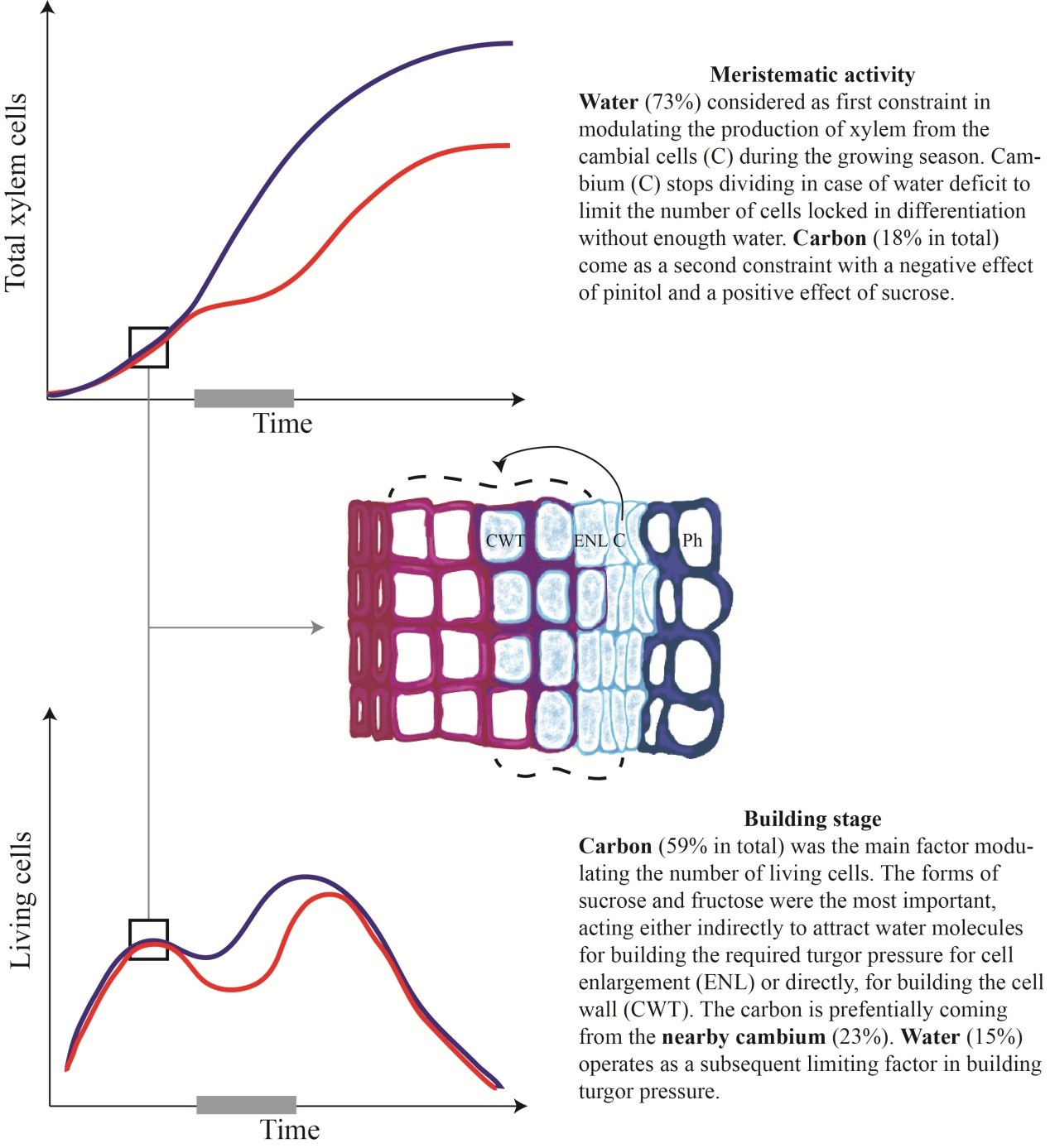Nonstructural carbohydrates (NSCs) play a crucial role in xylem formation and represent, with water, the main constraint toplant growth.
Prof. HUANG Jianguo and his cooperators assessed the relationships between xylogenesis and NSCs in order to verify the variance explained by NSCs and determine the influence of intrinsic (tissue supplying carbon) and extrinsic (water availability and temperature) factors.
During 2 years, wood formation was monitored in saplings of black spruce (Picea mariana ) subjected to a dry period of about 1 month in June and exposed to different temperature treatments in a greenhouse. In parallel, NSC concentrations were determined by extracting the sugar compounds from two tissues (cambium and inner xylem), both potentially supplying carbon for wood formation. A mixed-effect model was used to assess and quantify the potential relationships. Total xylem cells, illustr a ting mer istematic acti vi ty , were modeled as a f uncti on of w at er, s ucrose, a ndD -pinitol (conditional r2 of 0.79).Water availability was ranked as the most important factor explaining total xylem cell production, while the contribution of carbon was lower. Cambium stopped dividing under water de ficit, probably to lim it the nu mb er o f c ells r emain in g in differ enti ation without an adequate amount of water. By contrast, carbon factors were ranked as most important in explaining the variation in living cells (conditional r2 of 0.49), highlighting the functional needs during xylem development, followed by the tissue supplying the NSCs (cambium) and water availability. This study precisely demonstrates the role of carbon and water in structural growth expressed as meristematic activity and tissue formation.
The study entitled “The Contribution of Carbon and Water in Modulating Wood Formation in Black Spruce Saplings”has been published online in Plant Physiology (2015IF=6.28).
Link:http://www.plantphysiol.org/content/170/4/2072.short?rss=1

